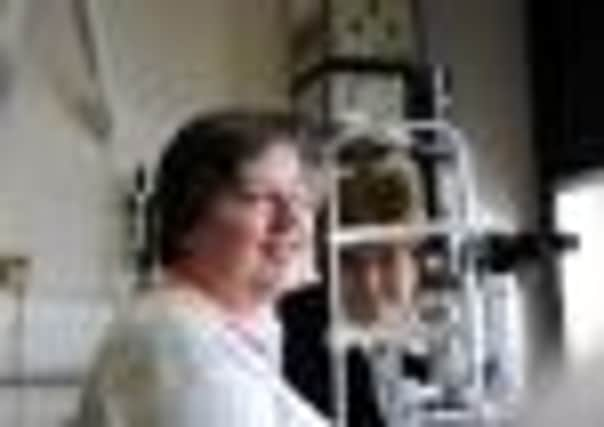Visionary science harvests stem cells to cure blindness


Twenty people are taking part in the revolutionary research programme that has been developed by scientists and clinicians in Scotland to treat serious eye disease.
Two patients have already started treatment – the first trial of its kind ever carried out in the UK – and doctors say they are “very impressed” with the results to date.
Advertisement
Hide AdAdvertisement
Hide AdIf the trial is a success, the breakthrough stem-cell replacement operations could be used to enable people to see again, and many for the first time, within a few years.
The treatment involves harvesting corneal stem cells taken from the eyes of a dead donor.
Patients have surgery to remove scarred and damaged parts of their cornea before the new stem cells are transplanted into their eyes. The new stem cells repair damage to the eye and within about nine months should restore that person’s eyesight.
Dr Ashish Agrawal, a consultant opthalmologist at NHS Lothian, who is carrying out the research operations, said yesterday: “This is a major and very exciting step in the complex process of restoring the sight of people with very debilitating eye conditions which leave people with little or no vision at all.
“This stem-cell treatment has the potential to give sight to many, many people around the world whose lives are limited by the fact they live in darkness.”
Grandmother Sylvia Paton, of Corstorphine, Edinburgh, was the first patient to take part in the research study and yesterday spoke for the first time about why she put herself forward for the operation.
She underwent three hours of surgery just 12 weeks ago and will have further surgery in about nine months when she will know if she will be able to see properly for the first time since she was born.
Mrs Paton, 50, said: “I was nervous and apprehensive but this has the possibility of helping me and many more people like me to transform our lives and enhance medical science. I have no regrets at all.”
Advertisement
Hide AdAdvertisement
Hide AdHealth secretary Nicola Sturgeon met Mrs Paton at Edinburgh’s Princess Alexandra Eye Pavilion to learn more about the potentially life-changing procedure.
She said: “This pioneering new treatment could potentially restore sight and improve the lives of many patients and it is vital that we continue to invest in innovative projects such as this one.
“Sylvia is a very real example of how corneal blindness can have a dramatic impact and this trial could potentially transform her life.
“If it proves to be successful, we could see many more people benefit from this Scottish-led trial as a result.”
The cornea is the transparent front part of the eye that covers the iris and pupil and is responsible for two-thirds of the eye’s total optical power.
This part of the eye contains a large group of cells but unlike most tissues in the body the cornea contains no blood vessels to nourish or protect it against infection.
Patients who suffer from corneal blindness have very poor or no vision as a result of blood cells clouding their cornea.
The £500,000 trial is being funded jointly by the UK Stem Cell Foundation and Scottish Enterprise in partnership with the Chief Scientist Office.
Advertisement
Hide AdAdvertisement
Hide AdAll of the donor stem cells have been grown by the Scottish National Blood Transfusion Service (SNBTS), which is running the trial together with two Scottish health boards, NHS Lothian and NHS Greater Glasgow and Clyde.
The SNBTS said there were about 20,000 patients across the UK with eye conditions that could be treated by the new stem-cell procedure if it was found to work.
Lil Shortland, chief executive of the UK Stem Cell Foundation, said: “It is great news for Scotland to be undertaking this cutting edge work.
“It will bring much-needed hope for so many people affected by this devastating condition and we are delighted to support this very promising clinical trial.”
Professor Bal Dhillon, consultant ophthamologist at NHS Lothian, who is the principal investigator on the study, said the research being carried out in Scotland had the potential to change scores of lives around the world.
He said: “Stem-cell treatment like this could bring sight to so many people all around the world who currently live in darkness.
“Research has found that some people have a genetic disposition to this type of eye condition while others can develop it later in life.”
He told how the procedure, if successful, would offer patients the chance of quicker and less painful treatment.
Advertisement
Hide AdAdvertisement
Hide AdExperts hope patients who have the stem-cell surgery will have their eyesight restored to a level that would enable them to pass the vision test required for a driving licence.
Doctors need only a tiny amount of tissue from a dead donor’s eye to produce enough stem cells for transplant. It normally takes about 14 days for the cells to be produced and doctors then have a window of just a few hours to implant them.
A second operation is required several months later to ensure the procedure has worked and will provide lasting benefits for patients.